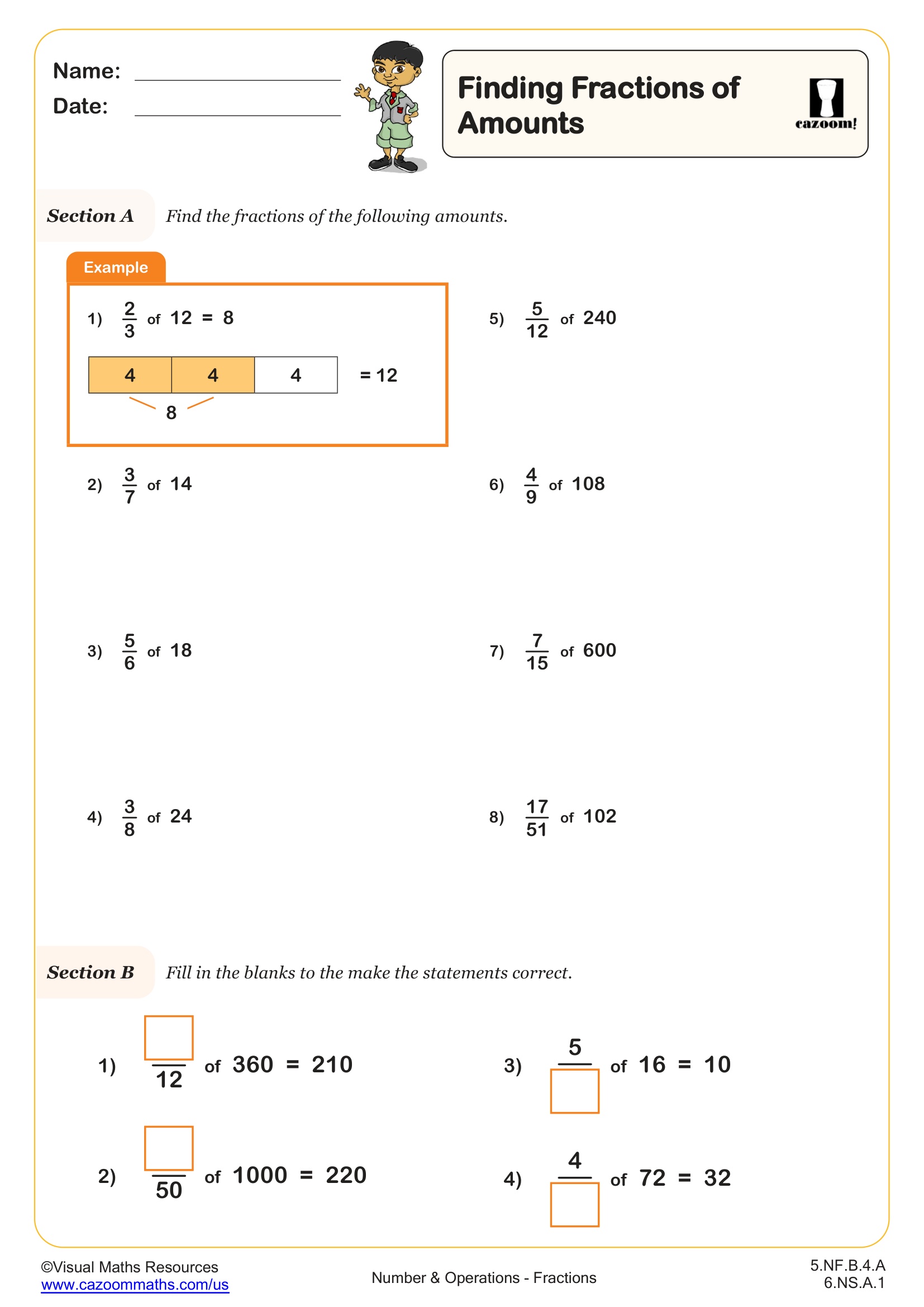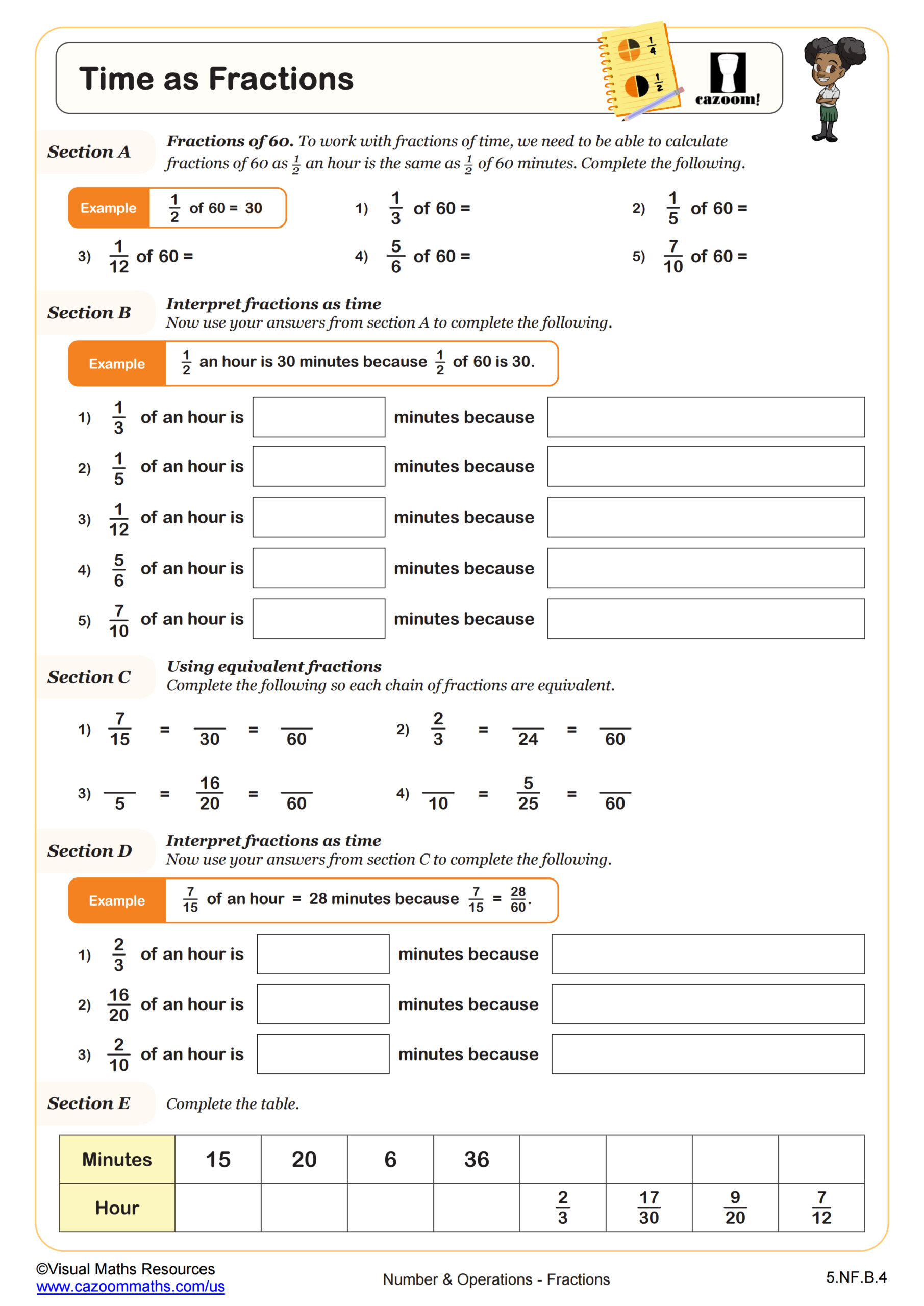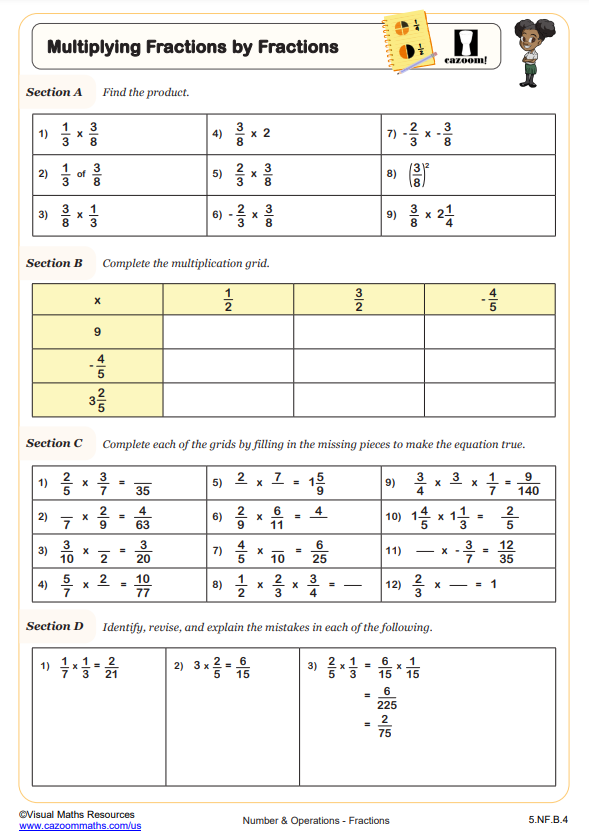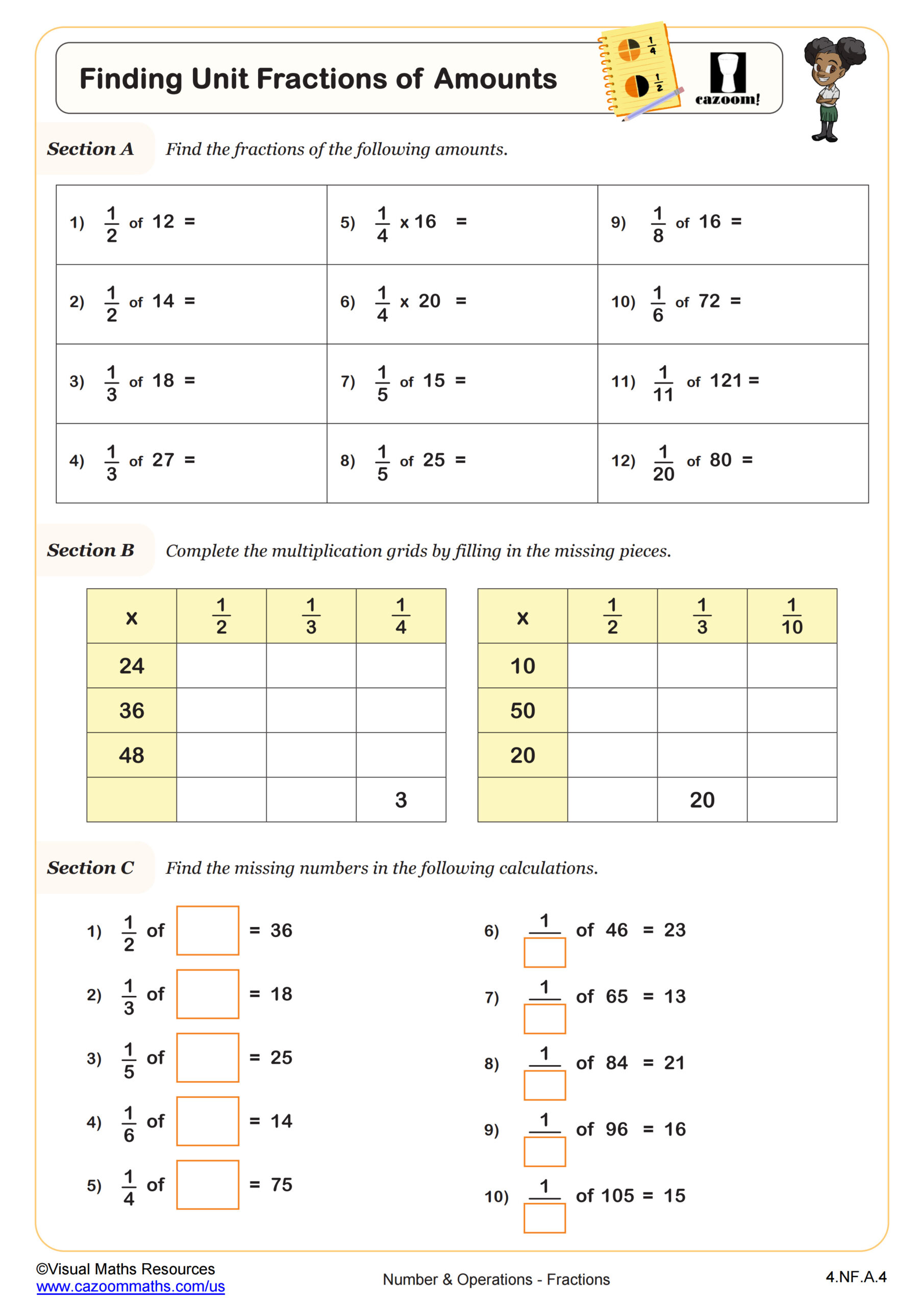Loading...
Finding Fractions of Amounts WORKSHEET
Suitable for Grades: 5th Grade, 6th Grade
CCSS: 5.NF.B.4.A, 6.NS.A.1
CCSS Description: Apply and extend previous understandings of multiplication to multiply a fraction or whole number by a fraction. a. Interpret the product (a/b) × q as a parts of a partition of q into b equal parts; equivalently, as the result of a sequence of operations a × q ÷ b. For example, use a visual fraction model to show (2/3) × 4 = 8/3, and create a story context for this equation. Do the same with (2/3) × (4/5) = 8/15. (In general, (a/b) × (c/d) = ac/bd.)
Interpret and compute quotients of fractions, and solve word problems involving division of fractions by fractions, e.g., by using visual fraction models and equations to represent the problem. For example, create a story context for (2/3) ÷ (3/4) and use a visual fraction model to show the quotient; use the relationship between multiplication and division to explain that (2/3) ÷ (3/4) = 8/9 because 3/4 of 8/9 is 2/3. (In general, (a/b) ÷ (c/d) = ad/bc.) How much chocolate will each person get if 3 people share 1/2 lb of chocolate equally? How many 3/4-cup servings are in 2/3 of a cup of yogurt? How wide is a rectangular strip of land with length 3/4 mi and area 1/2 square mi?
Interpret and compute quotients of fractions, and solve word problems involving division of fractions by fractions, e.g., by using visual fraction models and equations to represent the problem. For example, create a story context for (2/3) ÷ (3/4) and use a visual fraction model to show the quotient; use the relationship between multiplication and division to explain that (2/3) ÷ (3/4) = 8/9 because 3/4 of 8/9 is 2/3. (In general, (a/b) ÷ (c/d) = ad/bc.) How much chocolate will each person get if 3 people share 1/2 lb of chocolate equally? How many 3/4-cup servings are in 2/3 of a cup of yogurt? How wide is a rectangular strip of land with length 3/4 mi and area 1/2 square mi?
Finding Fractions of Amounts WORKSHEET DESCRIPTION
In this worksheet students will progress to finding fractions of amounts such as 5/12 of 240. All answers are integers meaning students can focus on their method and process.
Section A begins with an example using a bar model and there is plenty of space on this write on worksheet should your learners wish to use the same method.
Section B sees students considering what fraction of an amount produces a certain answer.
Next, given a fraction of an amount students are asked to find the whole. Again, an example is given with a bar model. Allowing students to emulate this method if they choose.
This worksheet ends with 3 worded questions, giving some context to these calculations.



